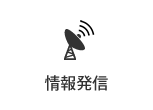本文
No.6(2003)12.The autoradiographic observation of neutron activated plant samples
Motoko KOYAMA and Yoshiyuki TANIZAKI
Imaging Plate(IP) is a radiography apparatus of applying photostimulable luminescence. IP has some advantages in comparison with X-ray film, for example, high sensitivity, wide latitude and high fidelity for radiations. The high sensitivity of IP makes it possible to observe the distribution of short-lived nuclides. We obtained autoradiographs of Azuki bean cuttings. In the basal region of Azuki bean cuttings, the intensity of autoradiographs of indole acetic acid(IAA)-treated samples were higher than that of water- and Gibberellin(GA)-treated ones. The high intensity parts of IAA-treated cuttings were extended upwards. The high intensive imaging of basal region treated in IAA indicated that high elemental concentrations were in existence for adventitious root formations. The measurement results by γ-ray spectrometry showed that the Ca content in the Azuki bean cuttings basal region increased in IAA treatment. It seems that the cell division for adventitious root formation needs Ca. In Azuki bean epicotyls, Ca content showed an increase to basal region, though Mg content increased to upper region.
Keywords
Imaging plate, Autoradiography, Neutron activation, Adventitious root, Azuki bean cuttings













